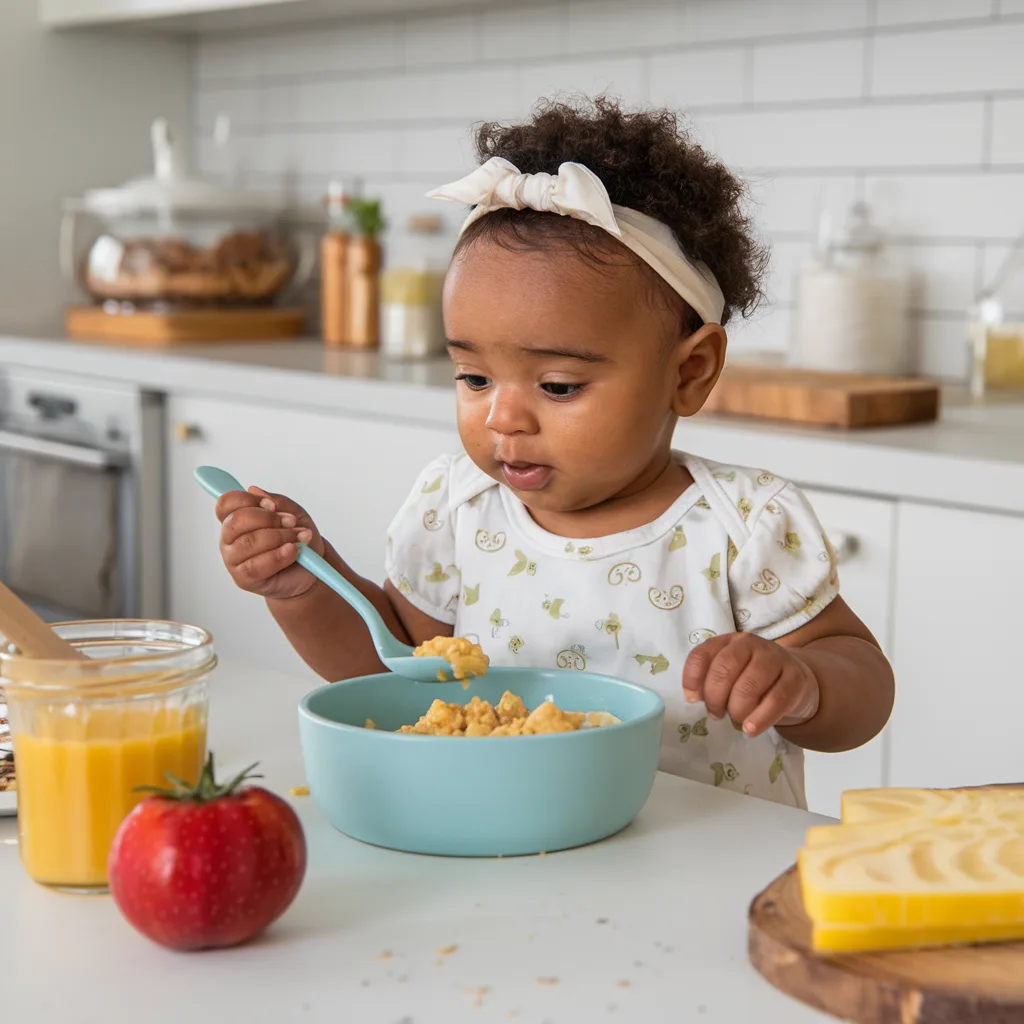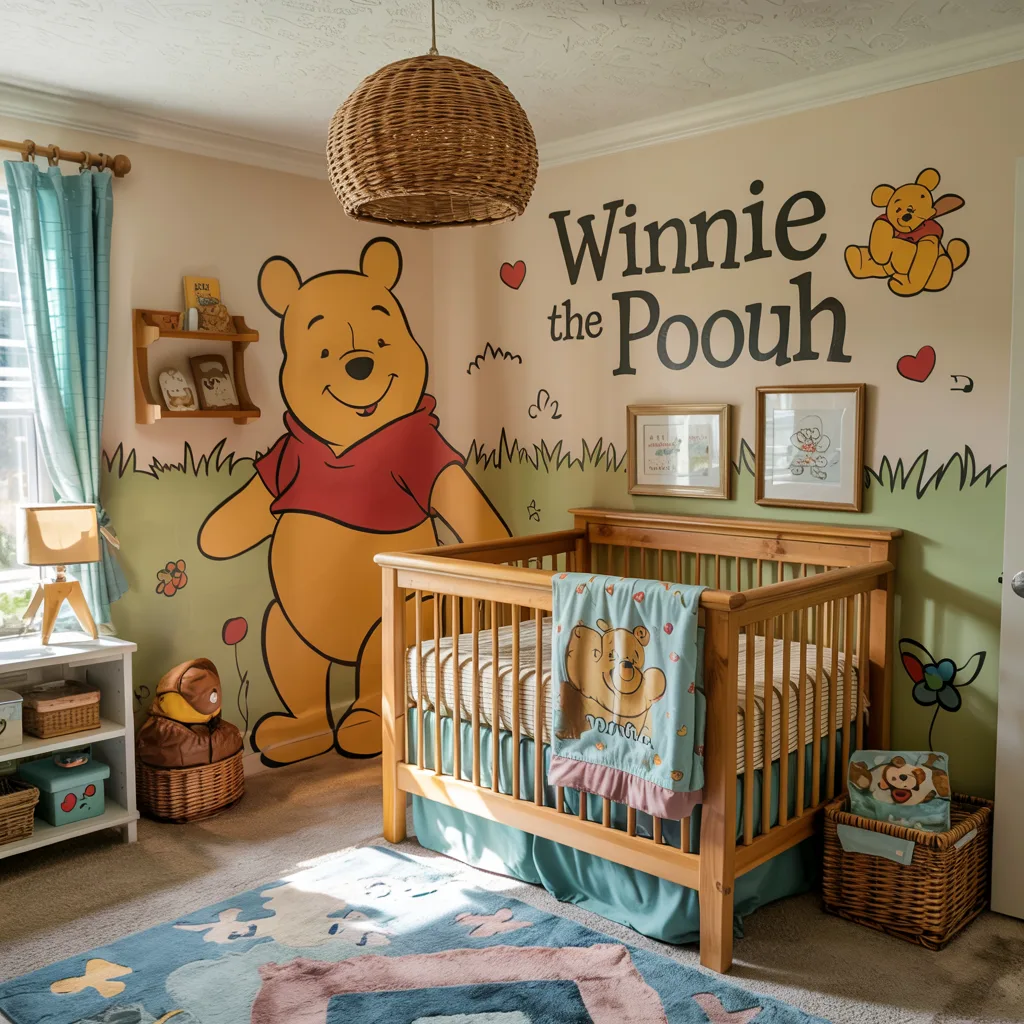Are you considering making your own baby food but feeling overwhelmed by questions about safety, nutrition, and preparation techniques? You’re not alone. As parents, we want to provide the absolute best for our little ones while balancing busy schedules and information overload.
This comprehensive guide to homemade baby food covers everything you need to know—from essential safety protocols and nutritional considerations to step-by-step preparation methods and storage solutions. With expert-backed advice and practical tips, you’ll feel confident creating wholesome, delicious meals for your growing baby.
Table of Contents
The safety and nutritional guidance in this article has been reviewed by Dr. Emily Chen, Registered Dietitian specializing in Pediatric Nutrition with 15 years of experience working with infants and young children.
Why Make Your Own Baby Food?
Making homemade baby food offers numerous advantages beyond the satisfaction of preparing meals for your little one. Let’s explore the compelling benefits that make the extra effort worthwhile:
Superior Nutritional Control
When you prepare baby food at home, you have complete oversight of what goes into each meal. Commercial baby foods often contain thickeners, preservatives, or excess sugars that aren’t necessary for your baby’s development.
With homemade options, you can:
- Select fresh, seasonal ingredients at their peak nutritional value
- Preserve nutrients through gentle cooking methods like steaming
- Avoid unnecessary additives, salt, and sugar
- Gradually introduce spices and herbs to develop your baby’s palate
Significant Cost Savings



The financial benefits of homemade baby food are substantial when calculated over time:
| Food Type | Store-Bought Cost | Homemade Cost | Savings |
|---|---|---|---|
| Sweet Potato | $1.20 per 4oz jar | $0.30 per 4oz | 75% |
| Apple Puree | $1.05 per 4oz jar | $0.25 per 4oz | 76% |
| Chicken & Vegetables | $2.00 per 4oz jar | $0.65 per 4oz | 68% |
For a baby consuming 1-2 jars daily, the annual savings can range from $500-$1000!
Allergen Management & Transparency
Making baby food at home allows you to:
- Introduce single ingredients methodically to monitor for potential allergic reactions
- Avoid cross-contamination risks for babies with known allergies
- Know exactly what’s in each meal without deciphering complex labels
Environmental Impact
Homemade baby food significantly reduces packaging waste. The average baby consuming store-bought food generates hundreds of glass jars or plastic containers annually. By making food at home and using reusable storage solutions, you’ll substantially reduce your environmental footprint.
Flavor Development & Food Acceptance
Research suggests babies who experience a variety of fresh flavors early are more likely to accept diverse foods later. Homemade baby food allows you to:
- Introduce authentic food flavors rather than processed versions
- Create customized combinations based on your baby’s preferences
- Gradually transition textures as your baby develops
Safety First: Non-Negotiable Practices
This section has been carefully reviewed by Dr. Emily Chen, RD, to ensure alignment with current safety guidelines.
Essential Hygiene Protocols
Before preparing baby food, always:
- Wash hands thoroughly with soap and warm water for at least 20 seconds
- Sanitize all preparation surfaces with food-safe cleaners
- Use separate cutting boards for produce and meat products
- Wash all utensils in hot, soapy water or dishwasher
Safe Food Preparation
Produce Safety:
- Rinse all fruits and vegetables thoroughly under cold running water
- For thick-skinned produce like melons or squash, scrub with a clean brush
- For leafy greens, separate leaves and wash individually
- Consider organic options for the “dirty dozen” (strawberries, spinach, kale, etc.) if budget allows
Cooking Temperatures:
- Ensure all meats reach safe internal temperatures:
- Poultry: 165°F (74°C)
- Ground meats: 160°F (71°C)
- Fish: 145°F (63°C)
- Cook eggs until both white and yolk are firm
- Steam vegetables until fork-tender to preserve nutrients while ensuring softness
Foods to Absolutely Avoid
- Honey in any form before 12 months (risk of infant botulism)
- Raw or undercooked meat, eggs, or fish
- High-mercury fish (shark, swordfish, king mackerel, tilefish)
- Unpasteurized dairy products or juices
- Added salt or sugar in baby’s portions
- Cow’s milk as a primary drink before 12 months
- Choking hazards even in pureed form if not completely smooth (nuts, whole grapes, popcorn)
Safe Allergen Introduction
Current pediatric guidelines actually recommend early introduction of potential allergens (between 4-11 months) to help prevent allergies from developing:
- Introduce one new food at a time
- Start with a small amount (¼-½ teaspoon)
- Introduce the food in the morning to monitor reactions throughout the day
- Wait 2-3 days before introducing another potential allergen
- Common allergens to introduce carefully: peanut products (thinned peanut butter), egg, dairy, soy, wheat, tree nuts, fish, and shellfish
“The latest research shows that early, controlled exposure to potential allergens, not avoidance, is the best approach for most babies. Always discuss with your pediatrician first, particularly if your baby has eczema or a family history of food allergies.” – Dr. Emily Chen, RD
Essential Equipment for Making Baby Food
You don’t need expensive specialized equipment to make excellent baby food. Here’s what you’ll need:
Basic Essentials
- A pot for steaming or boiling
- A fork or potato masher for soft foods
- Ice cube trays or small freezer-safe containers
- Reusable storage containers (BPA-free plastic or glass)
- Steamer basket (metal or silicone)
- Cutting board and knife
Helpful Upgrades
- Immersion blender or food processor for smoother textures
- Specialized baby food maker (combines steaming and blending)
- Silicone freezer trays with lids
- Reusable food pouches for on-the-go feeding
- Kitchen scale for portion consistency
Choosing the Best Ingredients

Stage 1 (4-6 months): Perfect First Foods
Focus on single-ingredient purees that are:
- Mild in flavor
- Easy to digest
- Nutritionally dense
- Unlikely to trigger allergies
Excellent starter options include:
- Vegetables: sweet potato, carrots, peas, green beans, avocado
- Fruits: banana, apple, pear
- Grains: iron-fortified infant cereals mixed with breast milk or formula
Nutritional Priorities
When planning baby food, prioritize:
- Iron-rich foods: critical after 6 months as baby’s natural iron stores diminish
- Iron-fortified cereals, pureed meat, beans, lentils
- Protein sources: essential for growth
- Pureed chicken, turkey, beef, legumes
- Healthy fats: critical for brain development
- Avocado, olive oil (small amounts), whole milk yogurt (after 6 months)
- Varied fruits and vegetables: providing diverse vitamins and minerals
Fresh vs. Frozen vs. Canned
| Type | Pros | Cons | Best Uses |
|---|---|---|---|
| Fresh | Peak flavor, No additives | Shorter shelf life, Seasonal variability | Direct consumption, Small batches |
| Frozen | Convenient, Often flash-frozen at peak ripeness, Retains nutrients | Texture changes in some foods | Large batch cooking, Off-season options |
| Canned | Shelf-stable, Convenient | May contain salt/sugar, BPA concerns in some cans | Emergency options (choose no-salt-added varieties) |
Step-by-Step Baby Food Preparation
1. Preparation
- Wash all produce thoroughly
- Peel fruits and vegetables with thick or fibrous skins (apples, squash)
- Remove seeds, pits, and strings
- Cut into uniform, small pieces for even cooking
2. Cooking Methods
Steaming (Preferred Method)
- Place water in a pot with a steamer basket
- Add prepared food to the basket
- Cover and cook until tender (5-15 minutes depending on the food)
- Reserve cooking liquid for thinning purees
Why steam? Steaming preserves the most nutrients while softening foods effectively.
Roasting
- Preheat oven to 375°F (190°C)
- Toss prepared food with a tiny amount of olive oil
- Spread on a baking sheet
- Roast until soft (20-45 minutes depending on the food)
Why roast? Roasting concentrates flavors and can make naturally sweet foods like sweet potatoes even more appealing.
Boiling
- Place prepared food in a pot with just enough water to cover
- Bring to a boil, then reduce to simmer
- Cook until tender
- Reserve cooking liquid
Why boil? Simple and effective, though some water-soluble nutrients may be lost.
3. Pureeing
- Transfer cooked food to a blender, food processor, or use an immersion blender
- Add small amounts of reserved cooking water, breast milk, or formula to achieve desired consistency
- For stage 1 (4-6 months): Blend until completely smooth
- For stage 2 (6-9 months): Leave some soft texture
- For stage 3 (9-12 months): Create thicker textures with soft lumps
4. Cooling
- Let food cool completely before storing
- Speed cooling by placing the container in an ice bath
- Never put hot food directly into the refrigerator or freezer
Storage & Handling Guidelines
Proper storage is critical for maintaining safety and nutritional quality:
Refrigeration
- Store in clean, airtight containers
- Label with contents and date prepared
- Use within 48 hours for most foods (24 hours for meat, fish)
- Keep refrigerator at or below 40°F (4°C)
Freezing
- Pour cooled purees into ice cube trays or containers
- Cover tightly or transfer to freezer bags once solid
- Label with contents and date
- Use within:
- Fruit/vegetable purees: 3-6 months
- Meat/protein purees: 1-2 months
- Mixed dishes: 1-3 months
Safe Thawing & Reheating
- Thaw in the refrigerator overnight (safest method)
- For quick thawing, use cold water bath (change water every 30 minutes)
- Reheat thoroughly to 165°F (74°C)
- Stir well and test temperature before serving
- NEVER refreeze previously frozen baby food
- Discard any food that has been in contact with baby’s saliva
“Many parents don’t realize that baby’s saliva introduces enzymes and bacteria into leftover food. Always discard any food that’s been in contact with the spoon that’s gone into baby’s mouth.” – Dr. Emily Chen, RD
Introduction Strategy & Timing
Signs of Readiness for Solid Foods
- Sits up with minimal support
- Shows good head and neck control
- Shows interest in food (watching others eat, reaching for food)
- Has lost the tongue-thrust reflex (doesn’t automatically push food out)
- Typically around 4-6 months (consult your pediatrician)
First Feedings
- Choose a time when baby is alert but not overly hungry
- Start with 1-2 teaspoons, gradually increasing
- Feed from a small spoon, never in a bottle
- Follow baby’s cues—never force feeding
- Allow exploration and messiness
Expanding the Menu
- Introduce new foods one at a time (especially potential allergens)
- Focus on variety rather than quantity
- Watch for signs of readiness for increased texture
- By 12 months, aim to have introduced a wide range of flavors and textures
Troubleshooting Common Challenges
Baby Rejecting Food?
- Try offering at different times of day
- Consider temperature (some babies prefer room temperature foods)
- Mix with familiar foods initially
- Be patient—it can take 10-15 exposures for acceptance
- Check consistency—some babies are sensitive to texture
Dealing with Constipation
- Offer “P” fruits: prunes, pears, peaches
- Ensure adequate fluid intake
- Consider puree consistency (may need more liquid)
- Avoid excessive rice cereal, which can be binding
Tips for Busy Parents
- Dedicate one day per month for batch cooking
- Freeze in portion sizes appropriate for baby’s current intake
- Consider partial homemade approach—no need to be all-or-nothing
- Repurpose suitable portions of family meals when possible
- Use fresh foods for immediate consumption, frozen batches as backup
Conclusion
Making homemade baby food is a rewarding way to nourish your growing baby with wholesome ingredients while developing their palate for a lifetime of healthy eating. With proper planning and simple techniques, you can provide nutritious meals that support your baby’s development without spending hours in the kitchen.
Remember that each baby is unique—follow your child’s cues, consult with your pediatrician about specific nutritional needs, and enjoy this special time of discovery together.
Would you like personalized guidance for your baby’s nutritional journey? Download our free Homemade Baby Food Starter Guide with printable storage charts and a 3-month introduction plan!
This article was written by Sarah Williams, certified nutritionist and mother of three with 8+ years of experience creating content about infant and toddler nutrition. The safety and nutritional content has been reviewed by Dr. Emily Chen, RD, Pediatric Nutrition Specialist.











